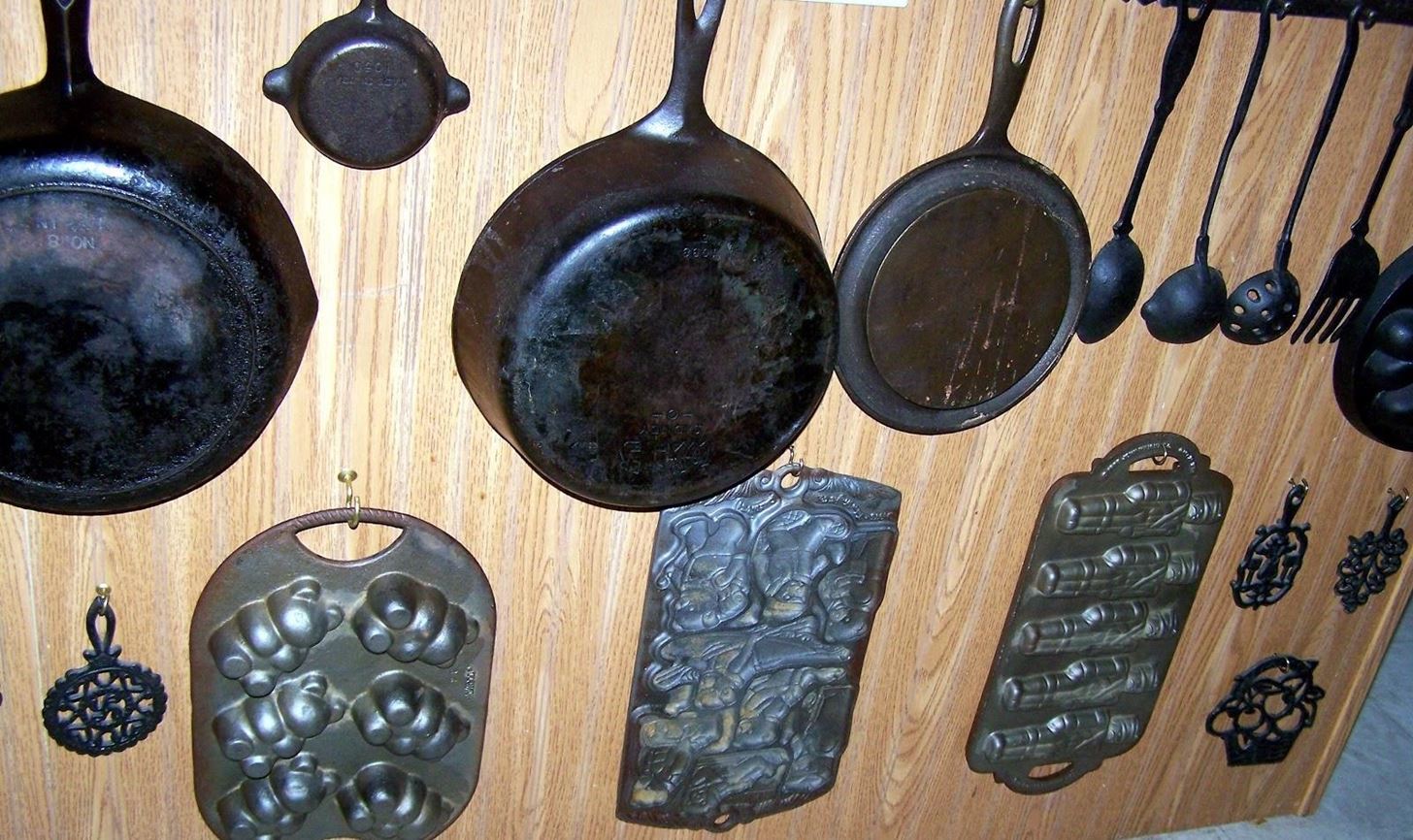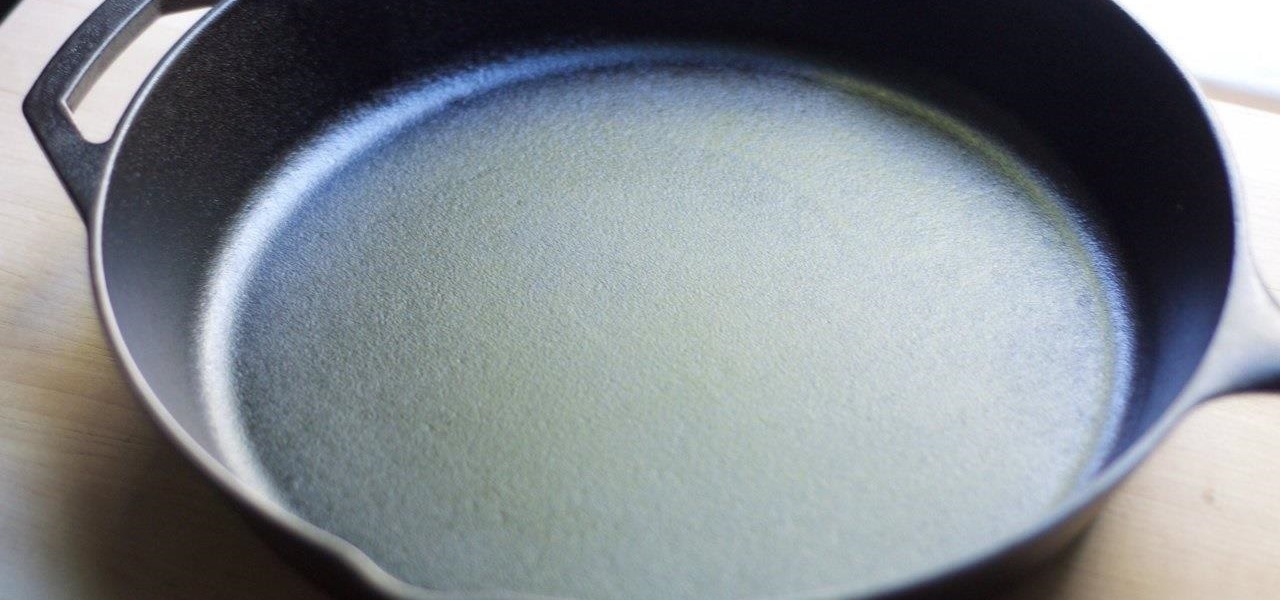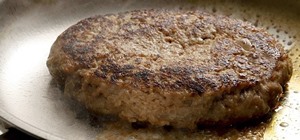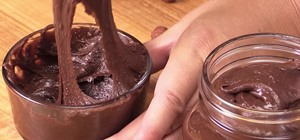Cast iron pans are a timeless treasure—they're an essential kitchen tool that will stand the test of time, and no home kitchen is complete without one. However, they do have a reputation for being difficult to care for... with arguments both for and against regular seasoning.

In 2010, a blogger named Sheryl Canter claimed that she found the best way to season a cast iron pan that would keep the cast iron from rusting... or requiring re-seasoning! And after a few hands-on test by Cook's Illustrated and The Kitchn with glowing reviews, it looks like this technique is the winner.
The Answer to Our Prayers: Flaxseed Oil
Various guides for cast iron seasoning will tell you that as long as the oil used for re-seasoning has a high smoke point, it's okay for use. The fact is, however, that the type of oil you use plays a huge part in how long the seasoning of the cast iron lasts.
In this case, flaxseed oil (the food equivalent of linseed oil) stands above the other types of oil for the purpose of seasoning a cast iron because it polymerizes into a solid form during hours of high heat—and solidly bonds to the surface of the cast iron pan, giving it a thick, complete coating. And since linseed oil is traditionally used to give paintings and wood finishes a hard, polished finish, it only makes sense that its food equivalent can do the same for cast iron pans.

How Do I Season My Cast Iron with Flaxseed Oil?
The process is a little lengthy, but well worth the effort—especially since re-seasoning pans is a giant pain.
- Obtain flaxseed oil, either from Amazon (which we've linked to) or in the vitamins and supplements section of your grocery store.
- Make sure your pan is either new or stripped of its seasoning (if you leave the pan in your oven during a self-cleaning cycle, this will do the trick).
- Heat the pan in an oven at 200°F for 15 minutes to open up the pores in the pan itself.
- Remove the pan from the oven and add 1 Tbsp. of flaxseed oil to the pan, then rub the oil thoroughly into the pan using tongs and a paper towel.
- The pan should be cool enough to touch at this point; if so, then completely remove the oil from the pan by rubbing it dry with clean paper towels. If it's still too hot to touch, wait a few minutes, then rub the pan dry. The pan should be completely matte again, with no sign of glistening oil.
- Place the pan face-down in a cool oven, then set the oven to 500°F (or whatever your highest setting is) and bake for one hour.
- Turn off the oven and allow the pan to cool for two hours while still in the oven.
- Repeat the process five more times, or until the pan develops a dark, semi-matte surface.
Cambria from The Kitchn states that this method took her over 18 hours from start to finish, but left her with a pan that had an excellent preliminary seasoning; as she continued to cook with the new surface, she found that not only did the pan become even more nonstick with each use, but that it was an absolute snap to clean.

Cook's Illustrated testers found that the new seasoning had bonded so well to the cast iron surface that even a full run through the dishwasher didn't faze it whatsoever!
Time-Consuming, but Well Worth It
If you've ever suffered the pain of a rusted or gunky cast iron pan, you'll know how frustrating it is to clean and re-season it all over again. But with this ultimate way to season the pan, you'll barely require any maintenance or touchups to your pan—and get to enjoy the accumulated seasoning on its surface that makes cooking with cast irons such a joy.
More Kitchen Utensil Hacks:
Just updated your iPhone? You'll find new emoji, enhanced security, podcast transcripts, Apple Cash virtual numbers, and other useful features. There are even new additions hidden within Safari. Find out what's new and changed on your iPhone with the iOS 17.4 update.























4 Comments
Repeat the ENTIRE process again? Should I start with Step 2, 3, or 4?
Repeat starting with step 3. I have 5 cast iron pans handed down through my family for more than 150 years that we know of. They were rusted when I got them. I stripped the rust off with with steel wool and went through this process. It took about 10 times over the course of a few weeks, off and on. Now they look brand new and I can even fry eggs in them with no oil and they do not stick. Amazing!
Have you found a better substitute for paper towels? Or maybe the best brand to use? Little fibers gunking up are getting annoying.
I was wondering this as well. My research has led me to Scott's Shop Original Towels. They are really solid blue looking Paper Towels that don't leave fibers behind. I have also been told Bounty Paper Towels don't leave fibers as well, but I am going with Scott's just to make sure. It's not even expensive. You can get it at walmart for 2 rolls around 3 bucks or home depot has 3 rolls for like 5 bucks.. and amazon sells a 12 pack for like 23. I am attempting this now with Scott's Shop Paper Towels.
Share Your Thoughts